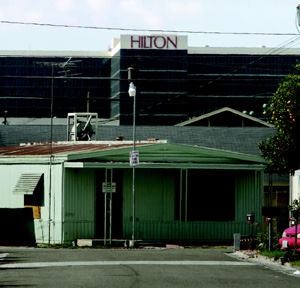Up in Smoke
Sub-meter wiring leaves an AIMCO property burned.
Faulty sub-meter wiring was blamed for fires that damaged six buildings at AIMCO’s Spring hill Lakes apartments in Greenbelt, Md., in late March, forcing an electrical shutoff at the garden-style complex’s 275 buildings. “Thank goodness no one was hurt,” says AIMCO senior vice president for communications Patti Shwayder. “There were 63 residents affected, and we relocated most of them as quickly as we could.”
Shwayder says insurance investigators are still preparing initial damage estimates, but regardless of the final tally, it’s likely just a small portion of the $948 million in damages and losses incurred annually by apartment fires, according to a 2005 National Fire Protection Association fire survey. The study notes that approximately 94,000 fires occurred in multifamily properties in 2005, which translates into roughly one fire every 5.5 minutes.
Or, in AIMCO’s case, three fires all at once. According to Shwayder, it took fire officials approximately 24 hours to determine that sub-meter wiring—possibly strained by a power surge—was the culprit leading to the three simultaneous fires at Springhill Lakes. “We were as horrified as our tenants, plus we have 28 of our own employees living on the property,” Shwayder says. “Obviously when you have three spontaneous fires, it is a scary thing.”
As part of their internal investigation, AIMCO is examining the subcontractor who initially installed the sub-metering system approximately seven years ago. Power was restored across the complex’s 2,900 apartments—sans the 63 damaged units—within four days, and AIMCO has offered residents $100 towards inconveniences caused by the conflagrations. With the sub-metering destroyed, AIMCO will also pay electrical utilities across the complex until a new system is online.
Shwayder praised city and county personnel who responded to the blaze and brought calm in the midst of tenant confusion. “The fire inspector came out the second day we held a press conference and confirmed that the property was safe,” she says. “But in the end we obviously would have preferred not to have the situation at all.”
– C.W.
Long Life?
Here’s how long things really last.
It’s the age-old question for property owners: to replace or not to replace building products and appliances? A new study might just make that decision a little easier. NAHB’s “Study of the Life Expectancies of Home Components” provides guidelines on the average life expectancy of a wide range of household items, from kitchen appliances such as refrigerators and gas ranges to building materials and structural systems, including concrete, masonry, and framing.
The life expectancy varies greatly by product. Some components are expected to last anywhere from 50 years to 100 years, such as kitchen cabinets; wood, marble, slate, and granite flooring; various types of insulation; kitchen sinks made of modified acrylic; and slate, copper, and clay/concrete roofs. Other parts of the home, however, have a much shorter life span. Just a few examples: Wood decks should last about 20 years; kitchen faucets, 15 years; linoleum floors, 25 years; and interior or exterior paints, 15 years or longer.
Interestingly, while many products have a longer life span now than when NAHB last did this survey in 1993, some products have a shorter existence, particularly appliances. This is partly because items have more complex features than a decade ago (i.e., refrigerators with built-in TV screens), says Gopal Ahluwalia, staff vice president for research and surveys in NAHB’s Economics Group. Oh, the sacrifices we make for television.
– Rachel Z. Azoff
